Abstract
The lactation experience of 55 mothers of 62 infants of low birth weight (2500 g or less) was prospectively compared with that of 55 mothers of 55 control infants (38 weeks' gestation or more, birth weight more than 2500 g) born at the same institution. The incidence rates of lactation at delivery were 73% for the control group and 58% for the low-birth-weight group; 11% of the infants of low birth weight fed breast milk were never put to the breast. The mean age at first suckling was 277.3 hours in the low-birth-weight group, compared with 3.3 hours in the control group (p less than 0.0005). At first suckling 81% of the low-birth-weight infants and 25% of the control infants sucked poorly or refused the breast (p less than 0.001). At discharge 65% of the breast-milk-fed control infants were exclusively breast-fed, compared with 3% of the low-birth-weight infants fed breast milk (p less than 0.001). The incidence rates of lactation over time were similar in the control and low-birth-weight groups (51% v. 44% at 1 month, 29% v. 13% at 3 months, 13% v. 4% at 6 months and 4% v. 2% at 12 months). The mean duration of lactation was 3.2 months for the control group and 2.5 months for the low-birth-weight group. In the long term 37% of the low-birth-weight infants fed breast milk failed to breast-feed, compared with 2% of the control infants, and only 31% were exclusively breast-fed, compared with 85% of the control infants (p less than 0.001). However, the degree of satisfaction with the lactation experience was similar in the two groups. We conclude that mothers of low-birth-weight infants have good potential for lactation.
Full text
PDF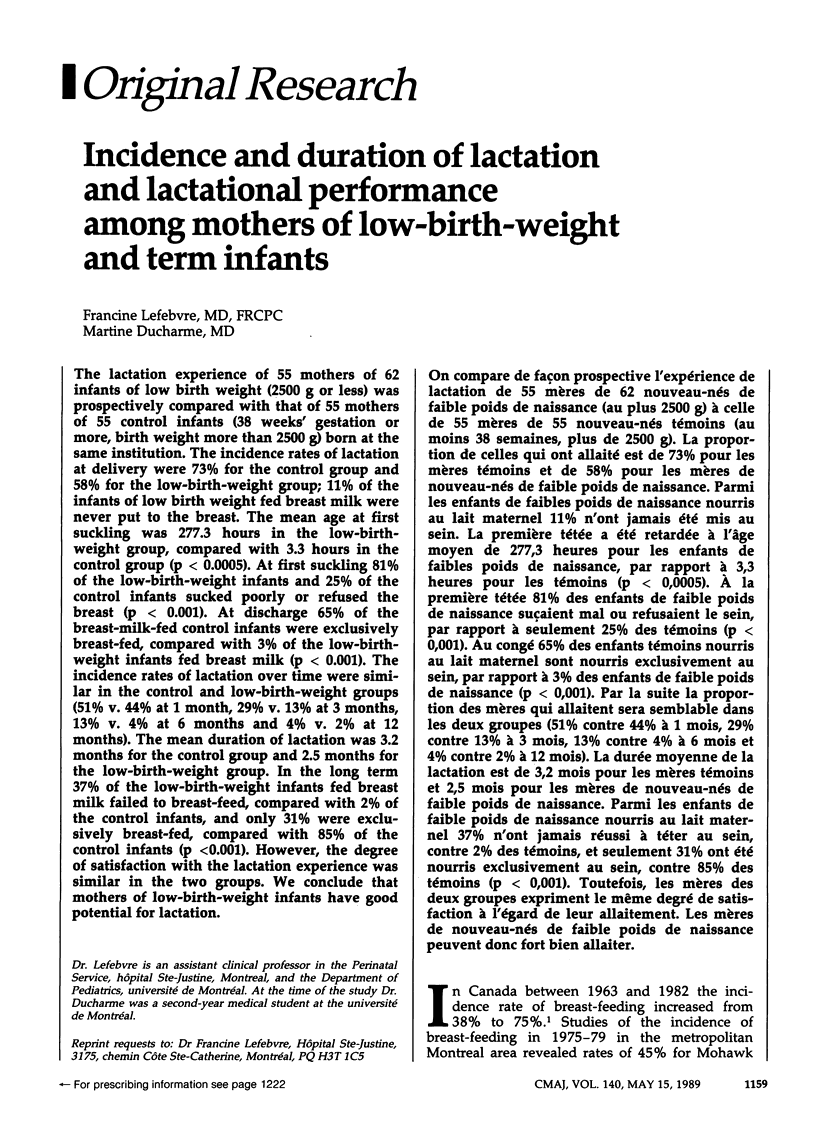
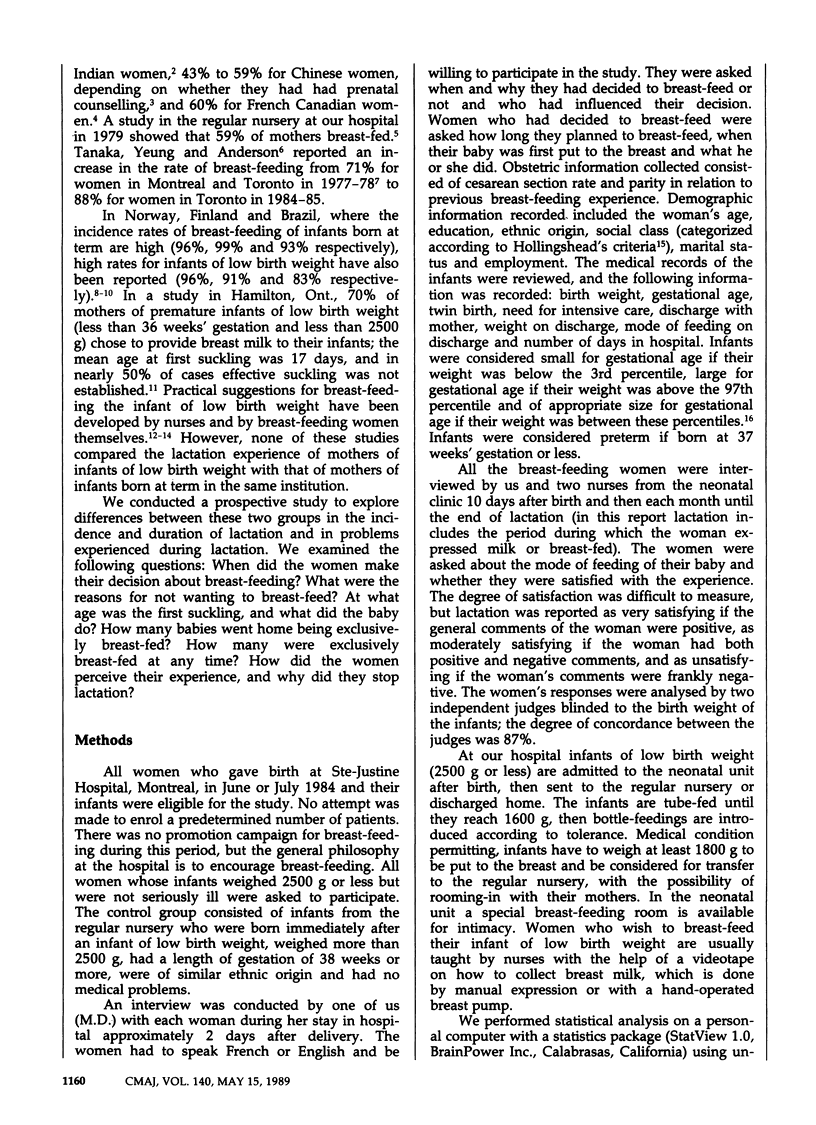
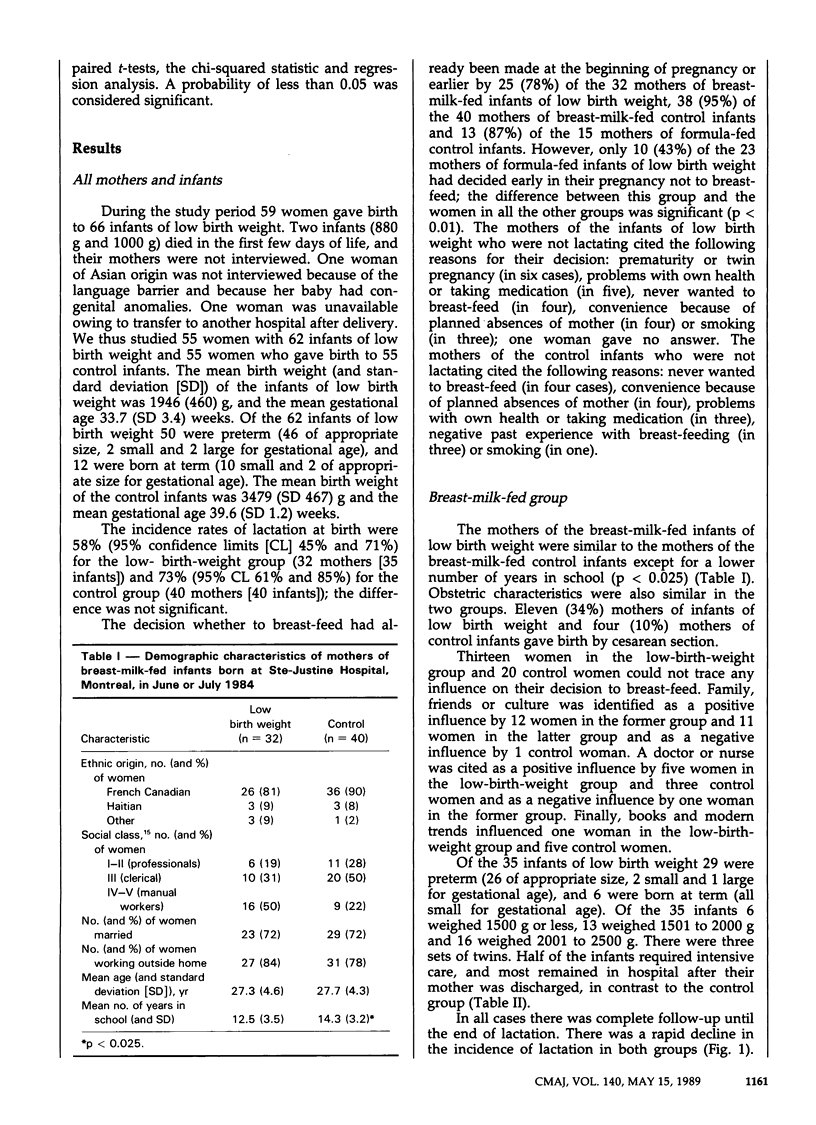
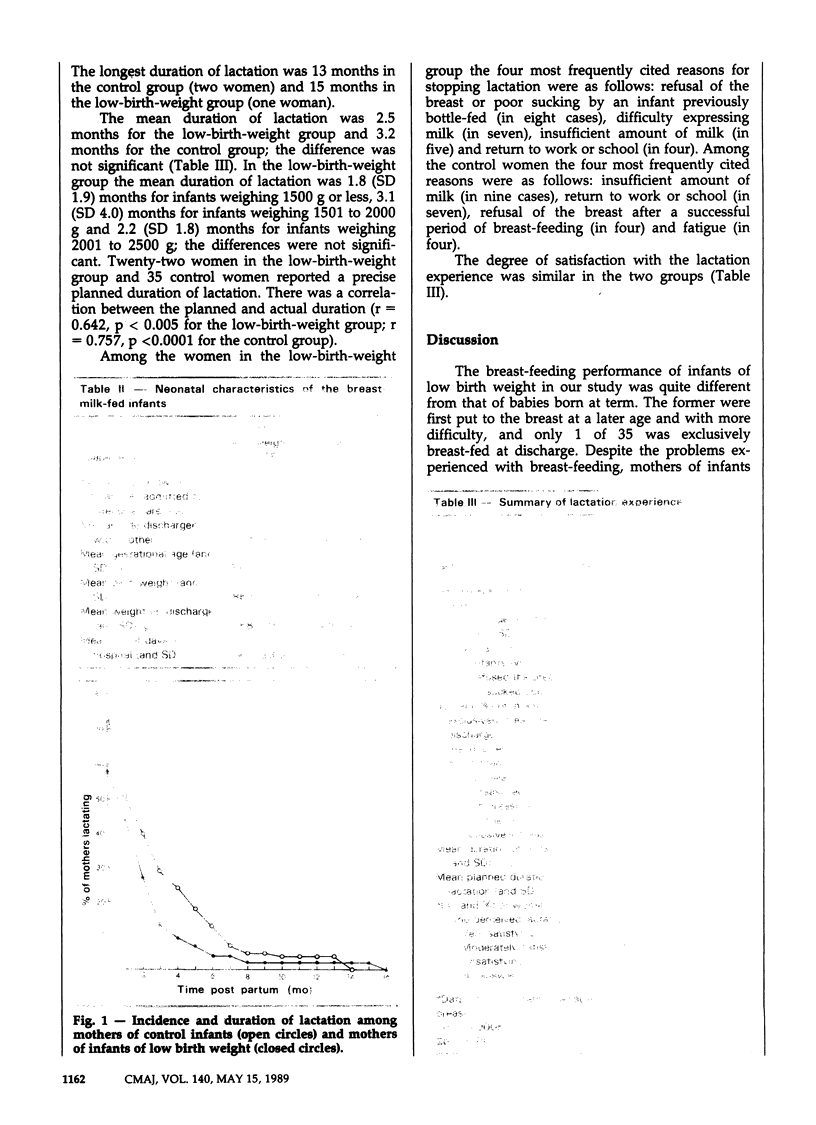
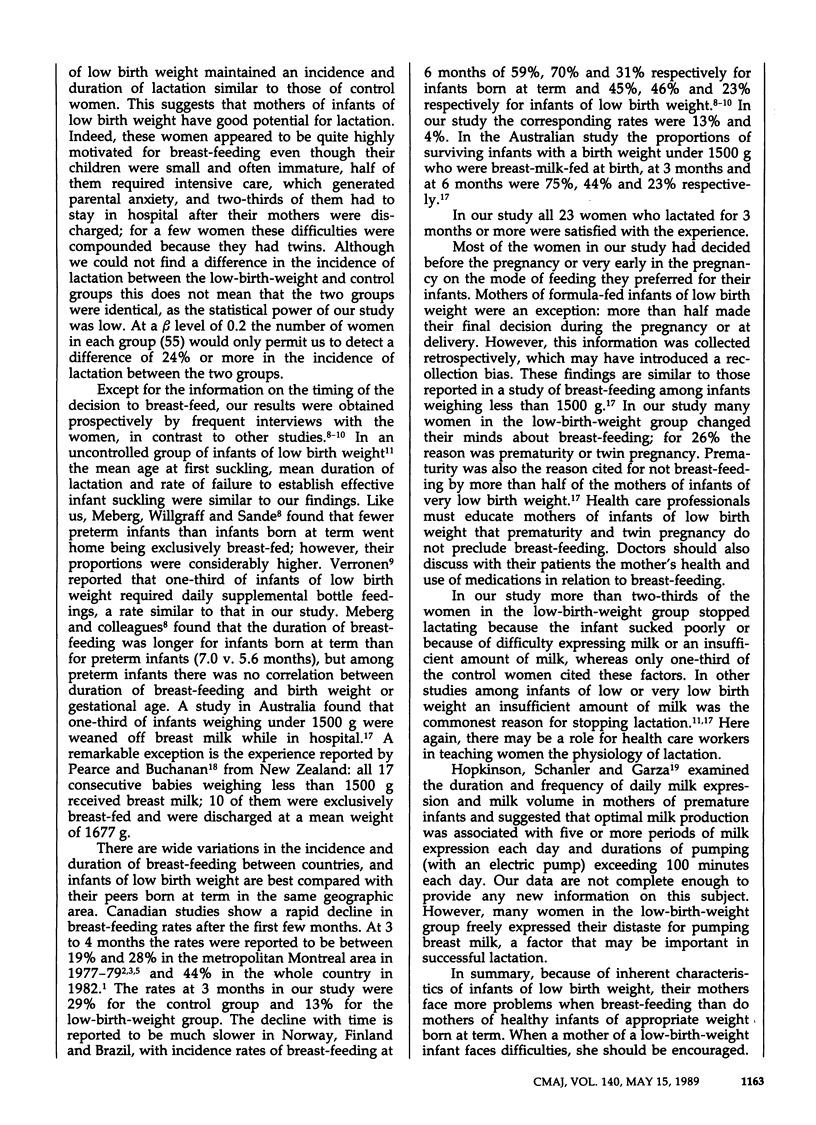
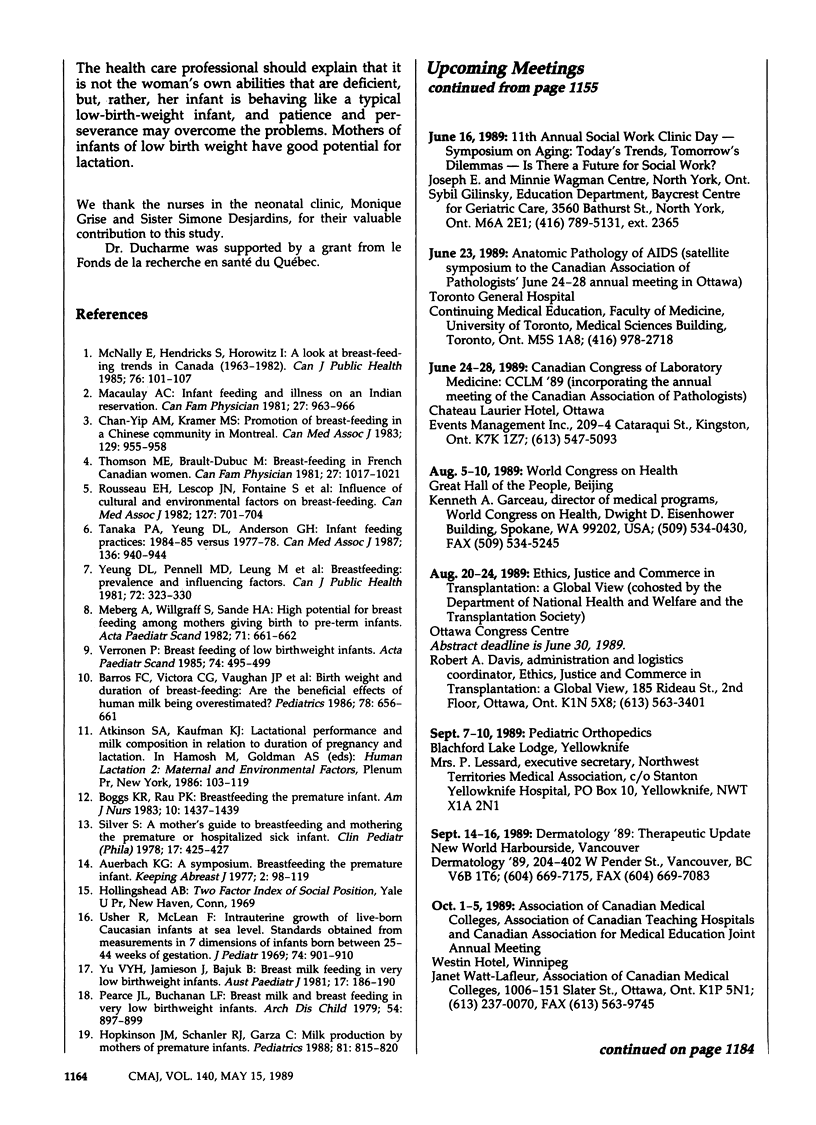
Selected References
These references are in PubMed. This may not be the complete list of references from this article.
- Barros F. C., Victora C. G., Vaughan J. P., Smith P. G. Birth weight and duration of breast-feeding: are the beneficial effects of human milk being overestimated? Pediatrics. 1986 Oct;78(4):656–661. [PubMed] [Google Scholar]
- Boggs K. R., Rau P. K. Breastfeeding the premature infant. Am J Nurs. 1983 Oct;83(10):1437–1439. doi: 10.1097/00000446-198383100-00030. [DOI] [PubMed] [Google Scholar]
- Chan-Yip A. M., Kramer M. S. Promotion of breast-feeding in a Chinese community in Montreal. Can Med Assoc J. 1983 Nov 1;129(9):955–958. [PMC free article] [PubMed] [Google Scholar]
- Hopkinson J. M., Schanler R. J., Garza C. Milk production by mothers of premature infants. Pediatrics. 1988 Jun;81(6):815–820. [PubMed] [Google Scholar]
- McNally E., Hendricks S., Horowitz I. A look at breast-feeding trends in Canada (1963-1982). Can J Public Health. 1985 Mar-Apr;76(2):101–107. [PubMed] [Google Scholar]
- Meberg A., Willgraff S., Sande H. a. High potential for breast feeding among mothers giving birth to pre-term infants. Acta Paediatr Scand. 1982 Jul;71(4):661–662. doi: 10.1111/j.1651-2227.1982.tb09493.x. [DOI] [PubMed] [Google Scholar]
- Pearce J. L., Buchanan L. F. Breast milk and breast feeding in very low birthweight infants. Arch Dis Child. 1979 Nov;54(11):897–899. doi: 10.1136/adc.54.11.897. [DOI] [PMC free article] [PubMed] [Google Scholar]
- Rousseau E. H., Lescop J. N., Fontaine S., Lambert J., Roy C. C. Influence of cultural and environmental factors on breast-feeding. Can Med Assoc J. 1982 Oct 15;127(8):701–704. [PMC free article] [PubMed] [Google Scholar]
- Silver S. A mother's guide to breastfeeding and mothering the premature or hospitalized sick infant. Clin Pediatr (Phila) 1978 May;17(5):425–427. doi: 10.1177/000992287801700509. [DOI] [PubMed] [Google Scholar]
- Tanaka P. A., Yeung D. L., Anderson G. H. Infant feeding practices: 1984-85 versus 1977-78. CMAJ. 1987 May 1;136(9):940–944. [PMC free article] [PubMed] [Google Scholar]
- Usher R., McLean F. Intrauterine growth of live-born Caucasian infants at sea level: standards obtained from measurements in 7 dimensions of infants born between 25 and 44 weeks of gestation. J Pediatr. 1969 Jun;74(6):901–910. doi: 10.1016/s0022-3476(69)80224-6. [DOI] [PubMed] [Google Scholar]
- Verronen P. Breast feeding of low birthweight infants. Acta Paediatr Scand. 1985 Jul;74(4):495–499. doi: 10.1111/j.1651-2227.1985.tb11016.x. [DOI] [PubMed] [Google Scholar]
- Yeung D. L., Pennell M. D., Leung M., Hall J. Breastfeeding: prevalence and influencing factors. Can J Public Health. 1981 Sep-Oct;72(5):323–330. [PubMed] [Google Scholar]
- Yu V. Y., Jamieson J., Bajuk B. Breast milk feeding in very low birthweight infants. Aust Paediatr J. 1981 Sep;17(3):186–190. doi: 10.1111/j.1440-1754.1981.tb01936.x. [DOI] [PubMed] [Google Scholar]


